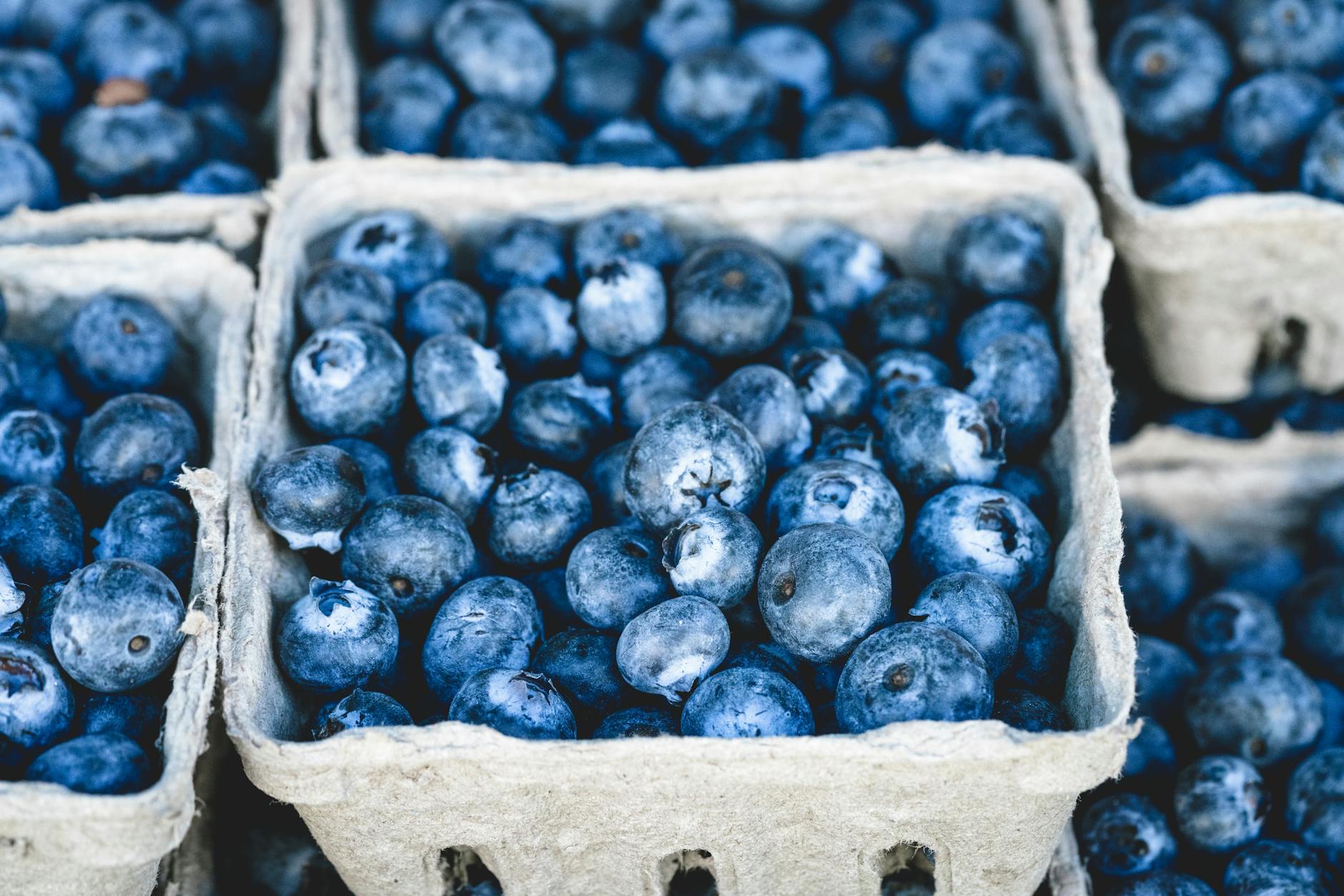Did you know that the secret to a healthier heart could be as simple as adding more colors to your plate? 🌈 While most of us focus on counting calories or following complicated diet plans, nature has already created a simple, color-coded system to help us identify heart-healthy foods.
From the deep reds of tomatoes to the rich purples of blueberries, each vibrant hue in fruits and vegetables represents different protective compounds that work together to keep your heart pumping strong. 💪 Research shows that people who consume a rainbow of plant-based foods are significantly less likely to develop cardiovascular disease compared to those who don’t.
Let’s explore how you can transform your diet into a heart-healthy masterpiece by understanding the powerful benefits behind each color of the rainbow. We’ll discover which red foods can boost heart health, how orange and yellow foods protect your cardiovascular system, why greens are true champions, and what makes blue and purple foods genuine superheroes for your heart. 🥗 ❤️

Understanding Color-Rich Foods
Why vibrant colors indicate heart health benefits
Nature’s vibrant colors in fruits and vegetables aren’t just visually appealing—they’re indicators of powerful heart-protective compounds. These colors signal the presence of specific phytonutrients that support cardiovascular health in unique ways.
Natural pigments and their cardioprotective properties
Different pigments offer distinct heart benefits:
- Anthocyanins (red/purple): Lower blood pressure
- Carotenoids (orange/yellow): Reduce inflammation
- Chlorophyll (green): Detoxify blood vessels
- Betalains (red): Support nitric oxide production
| Pigment Color | Key Compounds | Heart Benefits |
|---|---|---|
| Red/Purple | Anthocyanins | Blood pressure regulation |
| Orange/Yellow | Beta-carotene | Arterial health |
| Green | Chlorophyll | Blood vessel protection |
| Blue | Pterostilbene | Cholesterol management |
Daily recommended servings of colorful produce
For optimal heart health, aim for:
- 2-3 servings of different colored fruits daily
- 3-4 servings of varied vegetables daily
- At least 5 different colors throughout the day
The American Heart Association emphasizes incorporating a rainbow of produce for maximum cardiovascular benefits. Each color group provides unique protective compounds that work synergistically. A diverse, colorful diet ensures you’re getting the full spectrum of heart-healthy nutrients.
Now, let’s explore specific red foods that pack a powerful punch for heart health.

Red Foods for Heart Health
Tomatoes and Lycopene Benefits
Tomatoes stand as powerhouse fruits packed with lycopene, a potent antioxidant that gives them their vibrant red color. Research shows that lycopene helps reduce inflammation in blood vessels and prevents cholesterol oxidation, significantly lowering heart disease risk.
Strawberries and Anthocyanins
These beloved berries contain high levels of anthocyanins, which help:
- Lower blood pressure
- Reduce bad cholesterol
- Decrease inflammation
- Improve blood vessel function
Red Bell Peppers and Vitamin C
Red bell peppers contain triple the vitamin C of oranges, offering remarkable heart benefits:
| Nutrient | Amount per Cup | % Daily Value |
|---|---|---|
| Vitamin C | 190mg | 211% |
| Vitamin A | 4665 IU | 93% |
| Fiber | 3.4g | 14% |
Watermelon’s Heart-Boosting Properties
Watermelon delivers citrulline, an amino acid that converts to arginine in the body, supporting:
- Improved blood flow
- Reduced arterial pressure
- Enhanced exercise performance
- Better heart muscle function
These red foods work synergistically to protect your cardiovascular system. Regular consumption can significantly impact your heart health through their unique combination of vitamins, minerals, and protective compounds. Moving forward, we’ll explore the equally impressive benefits of orange and yellow foods that complement these red powerhouses in promoting heart health.

Orange and Yellow Power Foods
Citrus Fruits and Cardiovascular Protection
Citrus fruits are powerhouses of heart-protective compounds, particularly flavonoids and vitamin C. These nutrients work together to reduce inflammation and protect blood vessels from damage. Here’s what makes them exceptional:
- Oranges contain hesperidin, reducing blood pressure
- Lemons provide potassium for heart rhythm regulation
- Grapefruits lower bad cholesterol levels
- Tangerines boost circulation
Sweet Potatoes and Beta-Carotene
Sweet potatoes stand out as exceptional sources of beta-carotene, which converts to vitamin A in the body. They offer remarkable cardiovascular benefits:
| Nutrient | Heart Benefit |
|---|---|
| Beta-carotene | Reduces oxidative stress |
| Potassium | Controls blood pressure |
| Fiber | Lowers cholesterol |
| Anthocyanins | Prevents inflammation |
Yellow Bell Peppers for Blood Pressure
Yellow bell peppers contain more vitamin C than oranges and provide unique compounds that support heart health:
- Rich in potassium for blood pressure regulation
- Contains quercetin, a powerful antioxidant
- Provides folate for homocysteine reduction
- Low in calories but high in nutrients
These vibrant yellow and orange foods work synergistically to protect your cardiovascular system. Their natural compounds help maintain healthy blood pressure, reduce inflammation, and support overall heart function. The antioxidants in these foods also help prevent oxidative stress, a key factor in heart disease development. Next, we’ll explore the incredible benefits of green vegetables for heart health.

Green Champions
Leafy Greens and Blood Vessel Health
Leafy greens like spinach, kale, and Swiss chard are powerhouses for cardiovascular health. Their high nitrate content converts to nitric oxide in the body, helping blood vessels relax and improving circulation.
Broccoli’s Anti-inflammatory Effects
This cruciferous vegetable contains sulforaphane, a compound that reduces inflammation markers in the cardiovascular system. Regular consumption can help protect heart vessels from oxidative stress.
Green Apples and Fiber Benefits
Green apples provide soluble fiber that helps:
- Lower LDL cholesterol levels
- Regulate blood sugar
- Promote healthy digestion
- Support weight management
Avocados and Healthy Fats
| Nutrient | Benefit to Heart Health |
|---|---|
| Monounsaturated fats | Reduces bad cholesterol |
| Potassium | Regulates blood pressure |
| Fiber | Supports arterial health |
| Vitamin E | Acts as antioxidant |
Kiwi’s Potassium Punch
Kiwis pack a powerful combination of potassium and vitamin C, essential for maintaining healthy blood pressure levels and supporting blood vessel function. One medium kiwi provides about 215mg of potassium and 64mg of vitamin C.
These green champions work together to create a robust defense system for your heart. The combination of nitrates, antioxidants, fiber, and healthy fats provides comprehensive cardiovascular support. Moving forward, we’ll explore how purple and blue foods can complement these green powerhouses in your heart-healthy diet.

Purple and Blue Superfoods
Blueberries and Cognitive Function
Blueberries stand as nature’s brain-boosting powerhouse, packed with anthocyanins that protect heart and brain health. These tiny berries improve blood flow to the brain while reducing inflammation in blood vessels, directly supporting cardiovascular function.
Purple Grapes and Resveratrol
Purple grapes contain resveratrol, a compound that offers remarkable heart benefits:
- Reduces bad cholesterol levels
- Prevents blood clot formation
- Maintains healthy blood pressure
- Protects arterial walls
| Grape Component | Heart Health Benefit |
|---|---|
| Resveratrol | Blood pressure control |
| Flavonoids | Reduces inflammation |
| Quercetin | Prevents oxidation |
| Anthocyanins | Improves circulation |
Blackberries for Arterial Health
Blackberries excel in maintaining arterial flexibility and strength through their:
- High fiber content supporting healthy cholesterol levels
- Potent antioxidants preventing arterial damage
- Vitamin K content enhancing blood vessel health
- Magnesium helping regulate heart rhythm
Regular consumption of these purple and blue foods can significantly reduce the risk of cardiovascular disease. Research shows that just one serving daily can lower heart disease risk by up to 15%.
Next, we’ll explore practical ways to incorporate these colorful superfoods into your daily diet, making heart-healthy eating both delicious and sustainable.

Practical Implementation
Meal Planning with Rainbow Foods
Create vibrant, heart-healthy meals by incorporating foods from each color group throughout your week. Here’s a simple color-based meal planning system:
| Meal Time | Color Combinations | Example Dishes |
|---|---|---|
| Breakfast | Red + Yellow/Orange | Berry smoothie bowl with mango |
| Lunch | Green + Purple | Spinach salad with purple cabbage |
| Dinner | All colors | Rainbow stir-fry with mixed vegetables |
Storage Tips for Maximum Nutrition
- Keep berries unwashed in breathable containers
- Store leafy greens with paper towels to absorb moisture
- Place root vegetables in cool, dark places
- Separate ethylene-producing fruits from other produce
- Use glass containers for cut vegetables
Creative Recipes Combining Different Colors
Mix and match colorful ingredients to create these heart-healthy dishes:
- Rainbow Buddha bowls with quinoa base
- Multicolored vegetable soup
- Fruit-infused water with berries and citrus
- Colorful vegetable kebabs
Shopping Guide for Seasonal Options
Follow these seasonal shopping tips to maximize nutrition and value:
- Spring: Asparagus, strawberries, purple sprouting broccoli
- Summer: Tomatoes, blueberries, yellow bell peppers
- Fall: Purple eggplant, orange pumpkin, green kale
- Winter: Red cabbage, orange citrus, dark leafy greens
Now that you have practical tools for implementing a rainbow-rich diet, you can start creating colorful, heart-healthy meals that nourish both body and soul.

The vibrant world of colorful fruits and vegetables offers an incredible array of heart-healthy benefits. From the antioxidant-rich red tomatoes and berries to the beta-carotene packed orange carrots and sweet potatoes, each color brings unique protective compounds. The nutrient-dense greens, along with purple and blue foods rich in anthocyanins, work together to support cardiovascular health and reduce the risk of heart disease.
Making these rainbow-colored foods a daily habit doesn’t have to be complicated. Start by adding one new colorful fruit or vegetable to each meal, experiment with seasonal produce, and gradually build a diverse, heart-healthy plate. Your heart will thank you for embracing nature’s colorful bounty. Take the first step today – fill your next shopping cart with these vibrant, life-enhancing foods.




